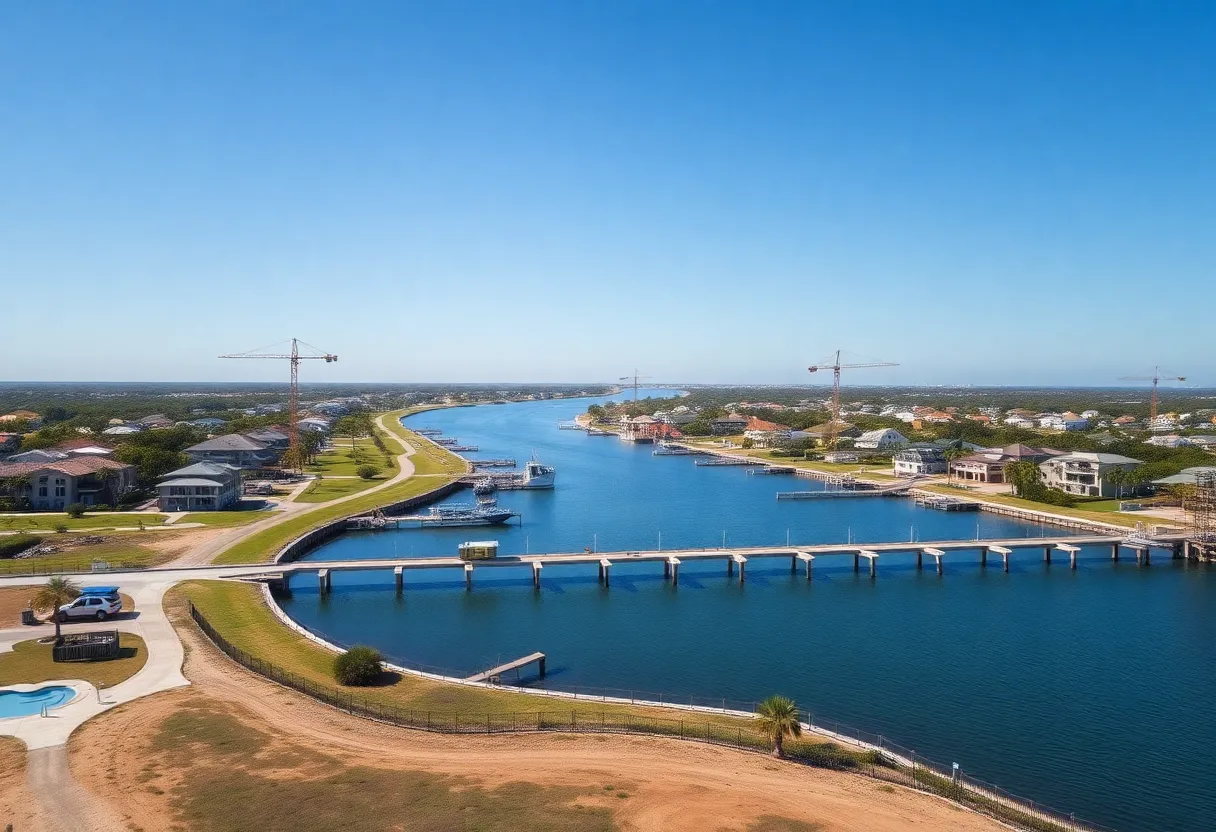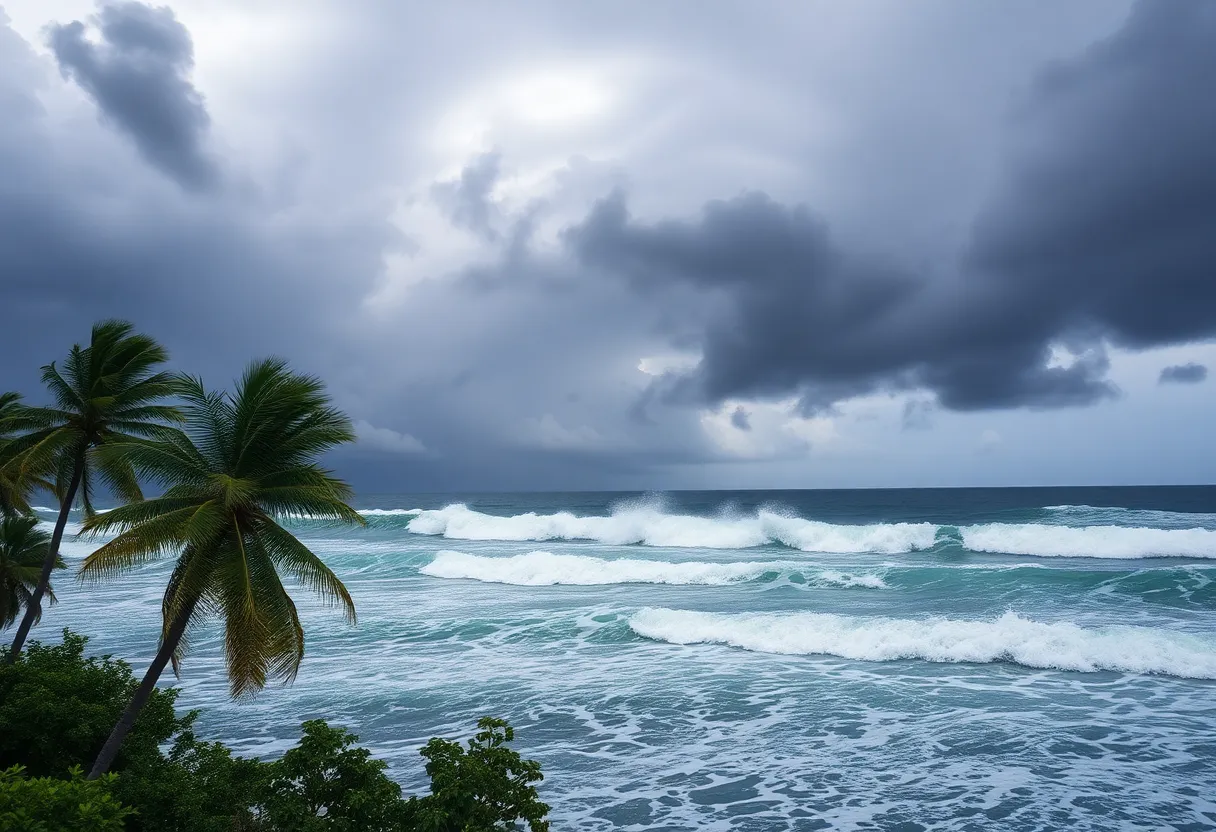News Summary
Florida faces a water infrastructure crisis fueled by a rapidly increasing population and development pressures. The state struggles with saltwater intrusion, droughts, and hurricanes, which threaten water supplies. Innovative solutions like Water-as-a-Service® (WaaS®) are being explored to assist municipalities in improving their water systems without heavy upfront costs. As population projections rise, local areas like Cape Coral are feeling the strain, prompting state initiatives designed to enhance water quality and supply. This situation highlights the urgent need for effective strategies to maintain Florida’s water resources sustainably.
Florida is facing a significant challenge as its population continues to surge, creating a water infrastructure crisis driven by rapid development. The influx of new homes, businesses, and resorts in South Florida, Central Florida, and coastal regions has strained existing water systems, risking the reliability of water supply amid escalating regional challenges.
The state is grappling with several factors adversely affecting its water supply. Saltwater intrusion threatens freshwater aquifers, while increased frequency of droughts and stronger hurricanes further amplifies the crisis. In light of these challenges, Florida municipalities are struggling to provide dependable water services, which are increasingly needed to meet the demands of the growing population.
In response to these mounting pressures, the innovative concept of Water-as-a-Service® (WaaS®) emerges as a viable solution. This model enables communities to acquire necessary water infrastructure without hefty upfront costs, allowing municipalities to redirect public funds toward other critical areas. WaaS® offers quick access to high-quality water treatment systems, which can adapt over time to meet regulatory changes and community needs.
The Seven Seas Water Group specializes in delivering tailored WaaS® solutions to municipalities, streamlining the complex processes involved in building and operating water treatment systems. The WaaS® model involves an assessment of current infrastructure challenges, designing customized treatment solutions, financing through service agreements, managing permitting and construction, and maintaining ongoing operations.
Through this approach, municipalities can expect predictable monthly fees for guaranteed service levels, allowing for better budgeting and planning. The system’s scalability is vital, enabling it to adjust to growing demand or regulatory changes as the community evolves.
Florida’s environmental challenges, including droughts, saltwater intrusion, and nutrient pollution, make traditional water sources unsustainable. One successful case study is seen in Alice, Texas, where a brackish water reverse osmosis system was implemented under the WaaS® model to promote water diversification without the burden of ownership.
Cape Coral is currently experiencing significant challenges due to inadequate water infrastructure and an increasing population, projected to rise from 224,455 in 2023 to 318,503 by 2050. Lee County is under a water shortage warning, triggered by rainfall deficits affecting the Mid-Hawthorn Aquifer, posing risks to both irrigation and drinking water supplies.
Residents in Northeast Cape Coral are voicing concerns over the lack of infrastructure improvements needed to support rapid housing development. Many are contemplating leaving the area due to ongoing water restrictions resulting from the inadequate system. Meanwhile, Cape Coral’s utility expansion plans are aiming to address infrastructure deficits by extending municipal water services to underserved areas without interrupting new housing growth.
While there are plans in place, some residents are worried about assessments and fees associated with future water services, raising affordability concerns. In acknowledgment of these water-related issues, Florida Governor Ron DeSantis has introduced funding initiatives focused on enhancing water quality, supply, and environmental restoration.
Projects like the Kermit H. Lewin Stock Island Reverse Osmosis Facility are under development to ensure a resilient water supply during emergencies, reflecting ongoing efforts to tackle infrastructure needs across the state. The state is also investing millions to improve water quality and combat nutrient pollution through targeted grants.
Overall, the rapid population growth in Florida brings an urgent need for innovative solutions to address the escalating water infrastructure crisis. As officials and communities work together, the WaaS® model presents a flexible approach to ensure that Florida’s water supply remains secure and sustainable for future generations.
Deeper Dive: News & Info About This Topic
- Cape Coral Breeze: Waterfront Wonderland with Not Nearly Enough Water Infrastructure
- WaterWorld: Florida Invests in Disaster Resilient Water Infrastructure
- The Capitolist: DeSantis Directs $389 Million to Water Infrastructure and Restoration
- PR Newswire: Jacobs to Design Florida Water Treatment Plant Upgrades for PFAS Removal
- Community Newspapers: Why Florida’s Water Future Depends on Flow Meter Technology
- Wikipedia: Water Supply in Florida
- Google Search: Florida Water Infrastructure
- Google Scholar: Florida Water Problems
- Encyclopedia Britannica: Florida Water Resources
- Google News: Florida Water Infrastructure

Author: STAFF HERE PETERSBURG WRITER
The ST PETERSBURG STAFF WRITER represents the experienced team at HEREStPetersburg.com, your go-to source for actionable local news and information in St Petersburg, Pinellas County, and beyond. Specializing in "news you can use," we cover essential topics like product reviews for personal and business needs, local business directories, politics, real estate trends, neighborhood insights, and state news affecting the area—with deep expertise drawn from years of dedicated reporting and strong community input, including local press releases and business updates. We deliver top reporting on high-value events such as Grand Prix of St. Petersburg, Localtopia, and SHINE Mural Festival. Our coverage extends to key organizations like the St. Petersburg Area Chamber of Commerce and St. Pete Downtown Partnership, plus leading businesses in finance, manufacturing, and healthcare that power the local economy such as Raymond James Financial, Jabil, and Bayfront Health St. Petersburg. As part of the broader HERE network, including HEREJacksonville.com, HEREOrlando.com, HERETallahassee.com, and HERETampa.com, we provide comprehensive, credible insights into Florida's dynamic landscape.





